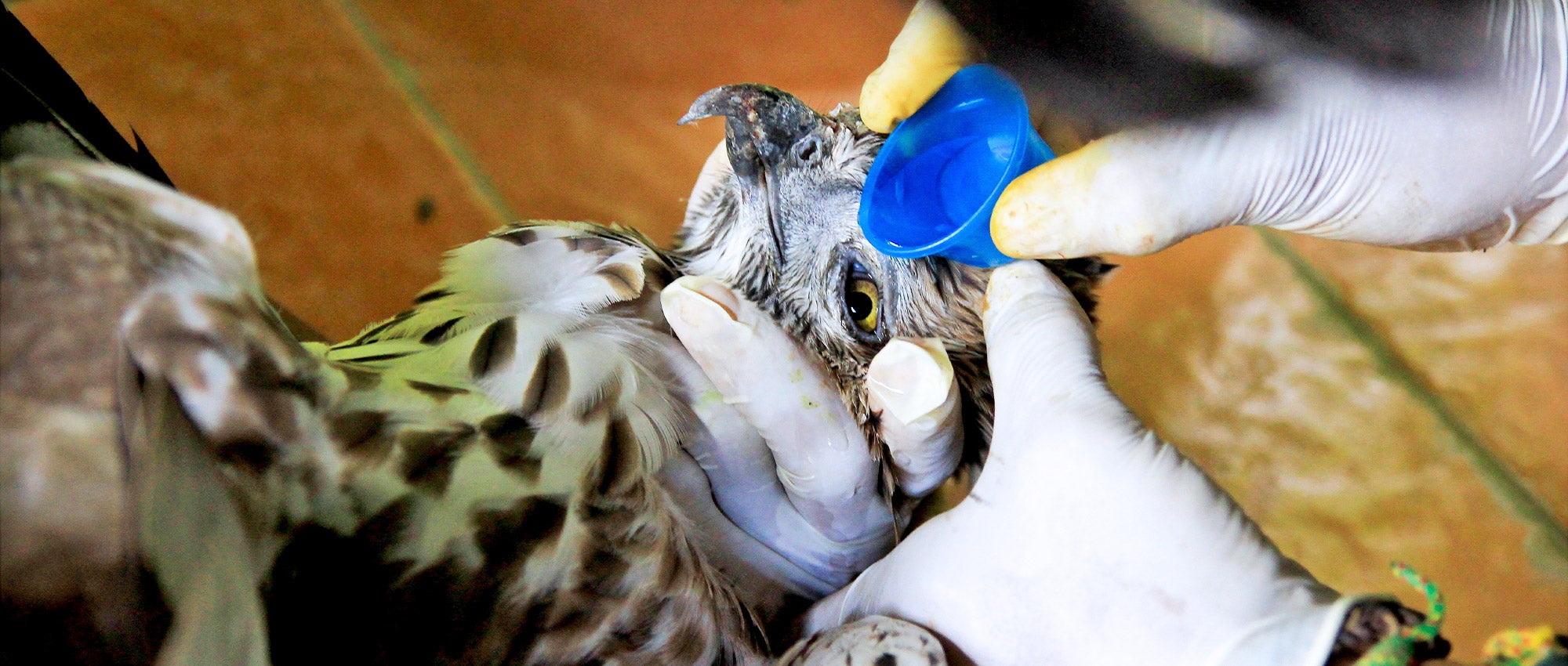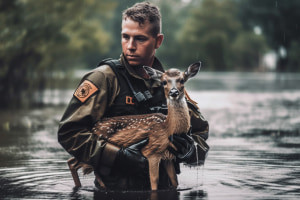The Role of Burlington Wildlife Rescue in Sustaining Endangered Variety
Wiki Article
Usual Obstacles and Solutions in Urban Wildlife Removal Efforts
Urban atmospheres present one-of-a-kind obstacles for wildlife monitoring specialists charged with taking care of or eliminating wildlife populaces. Recognizing the complexities included in urban wild animals removal is essential for developing approaches that stabilize human security with wildlife well-being. This discourse seeks to reveal the complex balance required for effective metropolitan wildlife monitoring.Ethical Wild Animals Management
Resolving the intricacies of moral wildlife management calls for a balance in between human rate of interests and the conservation of wildlife ecosystems. In metropolitan settings, this balance comes to be progressively tough as human growth encroaches on wild animals habitats, leading to frequent human-animal communications. Moral wild animals management in these atmospheres demands approaches that prioritize gentle treatment of pets while reducing possible conflicts.One of the core concepts in moral wild animals management is the avoidance of harm. This includes using non-lethal methods for wildlife elimination, such as exclusion techniques that avoid pets from entering human houses, or using deterrents that direct them far from city locations. Wild animals professionals are tasked with utilizing techniques that lessen anxiety and injury to the pets, guaranteeing their well-being is thought about alongside human security.
In addition, honest management calls for educated decision-making based upon scientific study and ecological understanding. It is necessary to assess the environmental functions of metropolitan wild animals and how their removal could influence neighborhood biodiversity. Specialists have to also take part in public education and learning, cultivating a more comprehensive recognition of conjunction methods and highlighting the value of protecting natural environments. Eventually, effective moral wild animals administration includes collaboration between conservationists, policymakers, and the general public to sustain city ecosystems.
Navigating Legal Constraints
Browsing the legal landscape of metropolitan wild animals removal provides an intricate layer to the currently challenging job of moral wildlife management. These legislations differ significantly across areas, demanding comprehensive understanding and compliance from those entailed in wildlife management - wildlife removal Burlington.One major challenge is the continuous development of these legislations, commonly driven by environmental modifications and social attitudes in the direction of wildlife preservation. Experts have to stay enlightened about present lawful standards and forthcoming legislative modifications. Non-compliance can lead to considerable charges, legal ramifications, and reputational damage.
Structure partnerships with wildlife agencies and legal specialists can provide useful understandings and support. Therefore, understanding and adhering to legal frameworks is not just a step-by-step necessity yet an essential element of sustainable and liable city wild animals administration.

Safety in Elimination Practices
Guaranteeing safety and security in wildlife elimination practices is vital to shielding both human and animal welfare. These efforts call for a balanced technique that decreases risk while achieving the desired result of moving pets from metropolitan setups. A primary issue in wildlife removal is the capacity for injury or illness transmission to people, demanding using personal protective devices (PPE) such as masks, gloves, and safety glasses. Trained experts ought to manage removals to prevent worsening the circumstance, as inexperienced individuals may unintentionally damage themselves or the pets entailed.
Safe removal techniques likewise consist of the use of humane traps designed to protect against injury. These traps have to be on a regular basis kept track of to ensure that animals are not left in distress. In addition, it is important to follow standards that determine the suitable handling, transport, and launch of recorded wildlife, making sure that the animals are returned to ideal habitats where they can prosper without posing more risks to metropolitan environments.
Additionally, education and learning and training for those involved in wildlife elimination are necessary. This makes sure that all celebrations know the most recent safety and security protocols and strategies, thereby minimizing the chance of accidents and promoting an unified coexistence between city dwellers and wildlife.
Ingenious Deterrent Solutions
While safety and security in wildlife removal is important, avoiding experiences with urban wild animals with innovative deterrent remedies can considerably lower the need for such treatments. Urban settings, with their wealth of food and sanctuary, typically bring in wild animals like raccoons, pigeons, and squirrels, causing possible conflicts. Advancements in technology and design have actually led the means for innovative and reliable deterrent methods that reduce wildlife visibility without injury.One such option is making use of ultrasonic gadgets, which give off high-frequency sounds inaudible to human beings yet undesirable for different wildlife varieties, driving them far from certain areas. Additionally, motion-activated lawn sprinklers can hinder pets by shocking them with abrupt ruptureds of water, effectively inhibiting their return. These tools are especially useful in shielding yards and eco-friendly spaces from foraging pets.

In addition, the combination of clever illumination systems that readjust their brightness and shade can disrupt the nocturnal tasks of specific wildlife, lowering their comfort in urban setups. Physical barriers, such click for more info as bird spikes and nettings, remain to work as functional deterrents, protecting against pets from nesting or roosting in undesirable places. Emphasizing humane and eco-friendly techniques, these advancements hold promise for sustainable urban wildlife administration.
Community Education And Learning Initiatives
Comprehending the value of area education campaigns is critical in resolving urban wildlife challenges successfully. Such campaigns play a substantial role in fostering coexistence between people and wild animals in city setups by elevating recognition and advertising responsible behaviors. Educating locals about local wild animals varieties, their environments, and actions can lower misconceptions and anxiety, bring about even more enlightened choices pertaining to wild animals monitoring.Neighborhood education and learning efforts typically include workshops, seminars, and outreach programs designed to engage residents of every ages. These campaigns can concentrate on functional recommendations, such as protecting waste bins, installing bird-friendly frameworks, and preventing feeding wildlife, which helps prevent bring in animals into metropolitan locations. By distributing knowledge concerning the eco-friendly functions my blog of wildlife, areas can move viewpoints from viewing pets as nuisances to recognizing their value within urban ecosystems.
Furthermore, education campaigns can equip communities to participate actively in preservation efforts. Residents that understand the relevance of wildlife preservation are a lot more likely to sustain humane elimination techniques and environment protection actions. Efficient area education calls for partnership in between regional authorities, wild animals experts, and area leaders to develop customized programs that address certain urban wildlife concerns. Such collaboration ensures that academic initiatives are both impactful and pertinent, fostering harmonious city environments.
Verdict
Urban wildlife i loved this removal calls for a complex method, attending to moral management, legal compliance, and security in elimination methods. Using cutting-edge deterrent remedies and prioritizing non-lethal methods are important for minimizing human-wildlife problem. Area education and learning campaigns play a substantial duty in modifying assumptions and motivating conjunction by cultivating an understanding of wild animals habits and lowering attractants. Successful urban wild animals monitoring rests on cooperation among professionals, authorities, and locals, ensuring approaches that guard human safety and security while valuing wildlife welfare.Urban environments existing distinct difficulties for wild animals administration specialists entrusted with handling or getting rid of wildlife populations. Recognizing the intricacies involved in metropolitan wild animals removal is crucial for creating techniques that balance human safety and security with wildlife welfare.Navigating the lawful landscape of city wildlife removal provides an intricate layer to the already tough task of moral wildlife monitoring.While security in wild animals elimination is vital, avoiding encounters with metropolitan wild animals via cutting-edge deterrent solutions can considerably minimize the demand for such interventions. Successful urban wildlife monitoring hinges on partnership amongst experts, authorities, and residents, ensuring strategies that safeguard human safety while appreciating wild animals well-being.
Report this wiki page